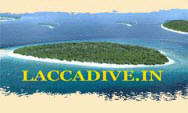|
Early
history of Lakhswadeep is unwritten. Local traditions
attribute the first settlement on these Islands to the
period of Cheraman Perumal, the last king of Kerala. It is
believed that the first settlers were hindus/ Buddhists.
Even now unmistakable Hindu social stratification exists in
these Islands. Buddhist archaeological remains are also
found in Kavaratti and Andrott Islands.
Cultural and social Influence from the mainland state of
Kerala had a deep impact on the inhabitants of the
Islanders. Greek, Roman and Arab sailors used to visit the
Islands for collecting boatloads of cowries and
tortoise-shell for commerce.
Missionary
activity in the 7th century AD and continued contact with
Arab traders eventually led to the conversion of all the
islanders to Islam. A Muslim saint, Hazrat Ubaidullah who
succeeded to convert the inhabitants to Islam, was buried on
Andrott. His grave is
revered to this day as a sacred site.
Later in the 12th century, when a Kolathiri princess married
a Muslim convert, the islands became a part of the only
Islamic dominion in the Kerala region.
During the
14th century Marco Polo, the famous Italian Explorer, seemed
to have visited these Island. During the 15th and 16th
centuries, the Portuguese arrived on the Islands and
colonized them.
Later Bibis (female rulers) and their husbands ruled the
islands, until control of the islands passed to Tipu Sultan
in 1783. When Tipu was killed by the British at the battle
of Srirangapatnam in 1799, the islands came under British
control. Sovereignity was transferred to India upon Indian
independence in 1947, and the islands were constituted a
union territory in 1956.
Courtesy to
Indian Islands
.com
| |
BRITISH INDIAN OCEAN TERRITORY |
|
| |
The
Chagos Archipelago,
c.1,180 mi (1,900 km), NE of
Mauritius, in the
central Indian Ocean. The islands, which form the
Chagos Archipelago and are located on the southern
end of a chain of sea mounts that also includes
Lakshadweep and the
Maldives.
|
|
|

